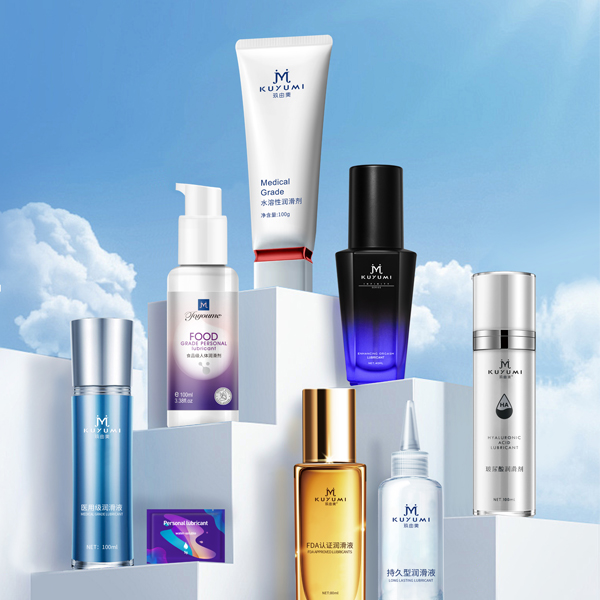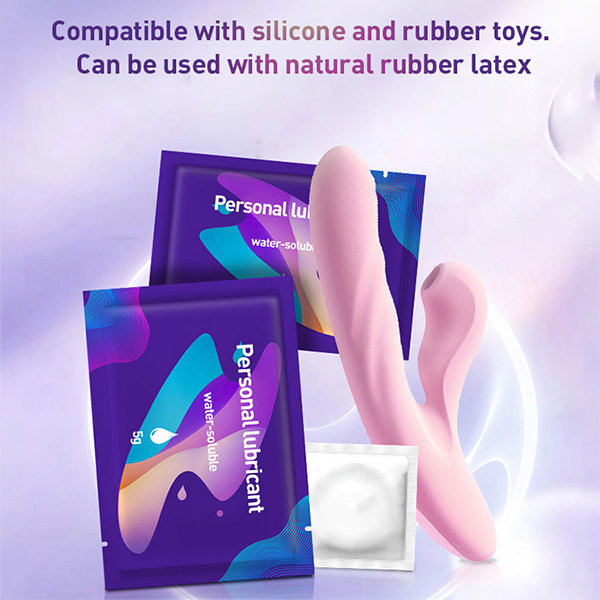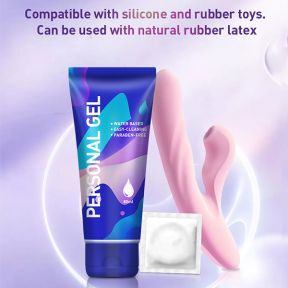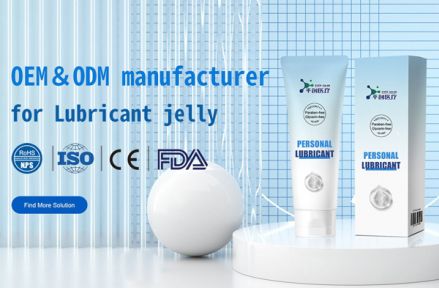personal lubrication can be said to be an indispensable part of sexual activities. Insufficient natural lubrication can lead to discomfort and even injury during intercourse. Just like how dryness on the face during winter causes friction between dry skin, lack of lubrication can also lead to discomfort due to increased friction between skin surfaces. The role of lubricants is to make the skin more hydrated, thereby reducing pain, minimizing friction, lowering the risk of discomfort, and enhancing the overall experience.

However, whether for beginners or seasoned individuals in the realm of sexual activities, many are unaware of the existence of lubricants!!! Yes, many people only realize the importance of lubricants after engaging in sexual activities. Due to the lack of comprehensive sex education and the conservative attitude toward sex in society, there is a significant gap in knowledge. Our textbooks barely cover sexual knowledge, and discussions among friends and family members are often avoided, leaving many to acquire sexual knowledge through self-research. Interestingly, while people may shy away from discussing sex in their daily lives, they seem more inclined to seek advice from strangers on the internet.
Lubricants can be classified based on their ingredients into:
1. Water-based lubricants:
Mainly composed of water, glycerin, propylene glycol, cellulose, etc., water-based lubricants are the most common type found on the market.
Advantages:
1) Easily soluble in water, making them easy to clean and refreshing.
2) They do not react with latex or silicone, making them safe to use with condoms and silicone-based toys, effectively preventing sperm and other bacteria from penetrating condoms.
Disadvantages:
1) Easily evaporates and gets absorbed by the skin, resulting in shorter-lasting lubrication that may require reapplication during intercourse.
2) Not suitable for anal intercourse, although they can be used with smaller anal toys.

2. Silicone-based lubricants:
Mainly composed of silicone oil, with common ingredients such as polydimethylsiloxane, which is odorless, tasteless, non-toxic, insoluble in water and ethanol, but soluble in organic solvents.
Advantages:
1) Provide longer-lasting lubrication compared to water-based lubricants and are less likely to evaporate, making them thicker.
2) Since they are not soluble in water, they can be used in water or during shower play.
Disadvantages:
While silicone-based lubricants can be used with latex condoms, they may damage silicone-based toys due to similar dissolution principles.
They are challenging to clean due to their insolubility in water, and their oily nature can affect the overall experience during intercourse.
Suitable for anal intercourse, mainly preferred by the gay community or those exploring anal play.
3. Oil-based lubricants:
Mainly composed of mineral oil, these lubricants provide longer-lasting lubrication. Petroleum jelly is a type of oil-based lubricant, which some may remember as having a greasy and sticky feel even after prolonged use.
Due to their tendency to dissolve natural latex condoms, increasing the risk of condom breakage and their low safety and difficulty in cleaning, oil-based lubricants are rarely seen on the market and are not recommended. Similarly, using petroleum jelly or shower gel as lubricants can cause urinary tract infections and vaginal infections in women.
Oil-based lubricants are more commonly used for massage or manual stimulation.

Some lubricants contain special ingredients or have different compositions to achieve various effects:
1. Hyaluronic acid lubricants:
Hyaluronic acid, also known as hyaluronan, is commonly found in skincare products and is also used in lubricants. It is mainly added to water-based lubricants to provide moisturization and delay the evaporation of lubricants, although it does not change the tendency of water-based lubricants to evaporate significantly. Hyaluronic acid is naturally present in the skin and is harmless to the body. Some lubricants also contain sodium hyaluronate, a sodium salt of hyaluronic acid, which also acts as a moisturizer and lubricant.
2. Semen-like lubricants:
These lubricants are water-based but often contain oily components like vegetable glycerin to enhance lubrication duration. They also contain hydroxyethyl cellulose to increase lubricity and viscosity. Carboxymethyl cellulose is another substance used to thicken lubricants. Some products also add extracts of sage to simulate the smell of semen. While these lubricants are easier to clean than silicone-based lubricants, they are thicker and more similar in texture to real semen, providing a more stimulating visual experience during intercourse.
3. Edible lubricants:
Lubricants with flavors like strawberry or mint belong to the water-based category. They contain plant extracts, edible flavors, or other additives. Some are safe for oral consumption, while others are not. It is essential to read the product instructions carefully. Although they are labeled as edible, consuming lubricants may feel strange, so it's best to use them sparingly and choose flavors that suit your preferences and tolerance levels. If there is any sign of spoilage, stop using them immediately. Pre-testing on a small area of skin (e.g., the arm) for allergic reactions is recommended before using lubricants with additional ingredients.
These lubricants are primarily used in oral sex scenarios to alleviate discomfort caused by odor or psychological factors and to improve the overall experience. However, it's essential to maintain hygiene as using flavored lubricants doesn't eliminate the need for oral and skin hygiene.


Mar. 19, 2024
Focused on the R&D of medical lubricant, Pingchuang Medical has become a trusted partner for global brands. Foshan Pingchuang Medical Technology Co., Ltd. (referred to as "Pingchuang Medical") has become a trusted partner for global brands precisely because of its deep focus on the research and development of medical lubricants and its exceptional product quality. Read More
Mar. 19, 2024
5g Aluminum Packaging Personal Lubricant OEM Branding - Adult Toy Export Supporting Lubricant Contract Manufacturing Foshan Pingchuang Medical Technology Co., Ltd. (referred to as "Pingchuang Medical") has become the preferred supplier for several well-known domestic and international lubricant brands, thanks to its outstanding R&D strength and rigorous production processes. Read More
Mar. 21, 2024
Pingchuang Medical: A personal lubricant OEM factory that helps more adult product brands go international Foshan Pingchuang Medical Technology Co., Ltd. has developed into a fully qualified and highly recognized high-tech medical enterprise since its establishment in 2012. Specializing in providing OEM custom processing services for domestic international brands of personal lubricant Read More
Mar. 22, 2024
How to seize the opportunity as the sales of medical lubricants surge on e-commerce platforms? In recent years, with the enhancement of health awareness and the rapid development of e-commerce channels, the sales volume of medical lubricants on e-commerce platforms has achieved significant growth. This phenomenon has attracted the attention of numerous brands, but how should major lubricant brands seize this opportunity? Read More